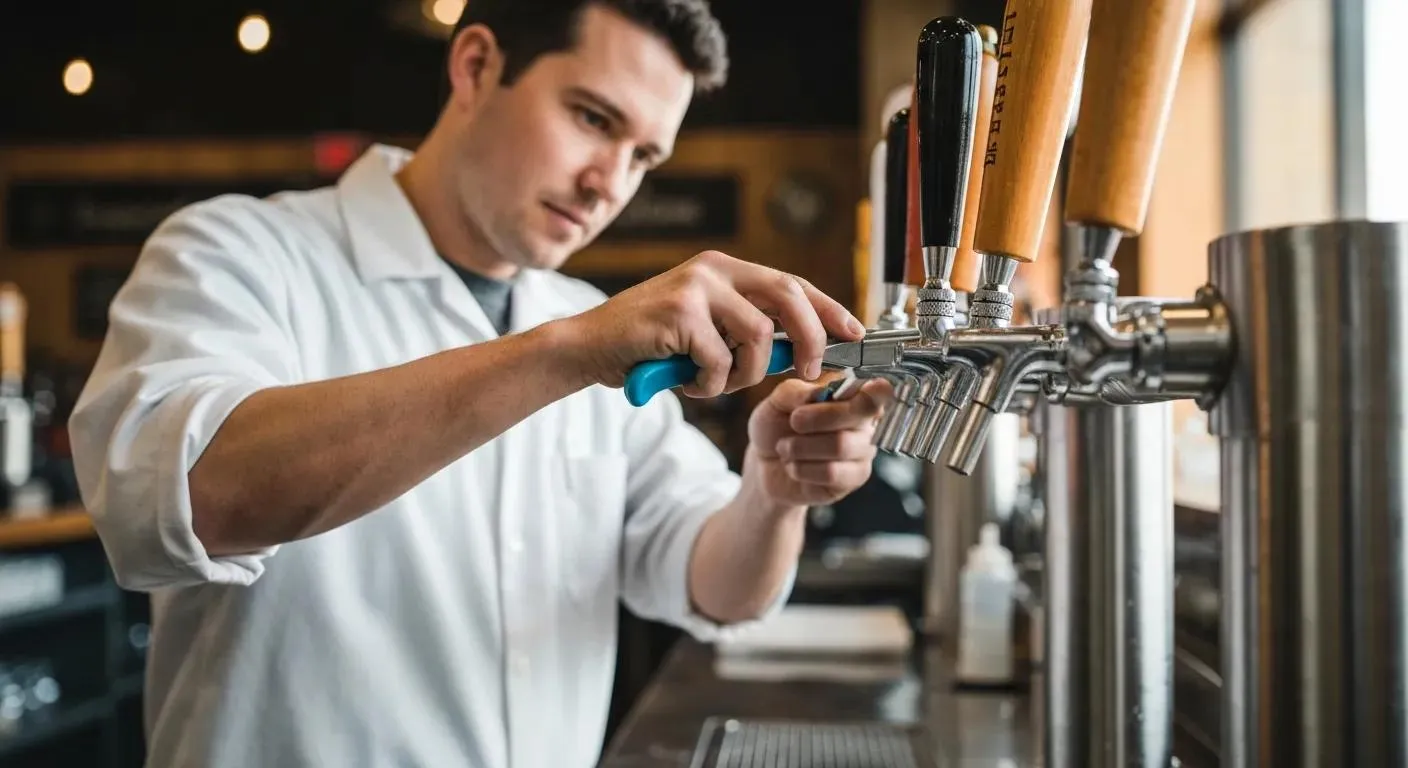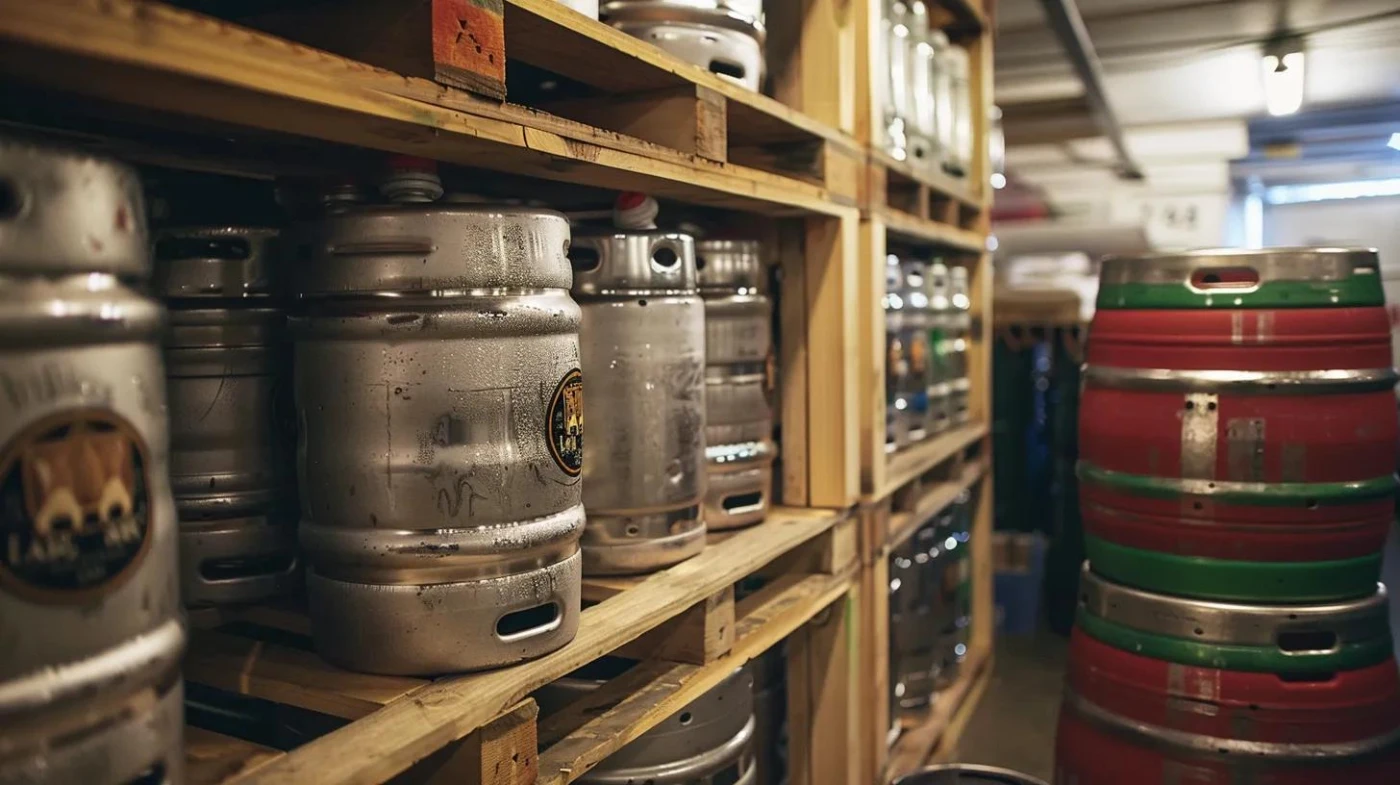Beer Flat: Causes and Solutions

Nothing is more disappointing than pouring a draft only to discover it lacks carbonation. Flat beer lacks the necessary carbonation that gives it its crisp, refreshing taste. . This can ruin your drinking experience and leave you wondering what went wrong.
There are several reasons why beer can go flat. It could be due to, poor carbonation,storage issues, or expired beer. Identifying the cause can help prevent it from happening again and ensure you enjoy every sip of your drink.
This article will explore why beer goes flat and provide practical tips and solutions to keep your beer bubbly and enjoyable. From understanding beer carbonation to troubleshooting draft systems, we’ll cover everything you need to know.
Key Takeaways
- Flat beer lacks the necessary carbonation for a good drinking experience.
- Proper sealing, carbonation, and storage are essential to prevent flat beer.
- Troubleshooting and maintenance can help sustain carbonation in draft systems.
Understanding Beer Carbonation
Carbonation gives beer its fizziness and texture. Proper carbonation depends on the amount of carbon dioxide in the beer, which is influenced by several factors, including brewing and fermentation methods.
Role of Carbon Dioxide in Beer
Carbon dioxide (CO2) is essential for beer’s characteristic bubbles and mouthfeel. When CO2 dissolves into the beer, it creates carbonic acid. This reaction produces a fizzy sensation when beer is consumed. Proper carbonation ensures the beer is both flavorful and refreshing.
Low CO2 levels leave the beer flat, while high levels can cause excessive foam. Correct CO2 levels also help preserve beer, preventing oxidation and spoilage.
Maintaining the balance of CO2 improves the beer’s overall quality and experience.

Determinants of Carbonation Levels
Temperature during fermentation also affects carbonation. Higher temperatures increase yeast activity, leading to more CO2. Pressure within the containment vessel also influences carbonation, especially in kegs.
Brewers often monitor these variables closely to achieve the desired carbonation level.
The Brewing and Fermentation Process
During the brewing process, yeast plays a crucial role in carbonation. After fermentation, yeast breaks down sugars and releases alcohol and CO2. This natural carbonation method is called bottle conditioning.
Alternatively, forced carbonation involves directly injecting CO2 into the beer after fermentation. This method is quicker and easier to control.
Monitoring these steps and conditions ensures the beer achieves the perfect carbonation level and enhances the drinking experience. Proper brewing practices are key to maintaining this delicate balance.
By understanding carbonation, brewers can craft beers with the right amount of fizz and flavor, making each sip enjoyable.
Causes and Prevention of Flat Beer
Flat beer can ruin the drinking experience. This often happens due to poor carbonation, incorrect temperature, or lack of proper sanitization.
Factors Leading to Flat Beer
One common cause of flat beer is improper carbonation. Without enough carbon dioxide (CO2), the beer will taste dull. Factors like inadequate priming sugar can lead to low carbonation levels. More sugar creates more bubbles, making the beer fizzy.
Temperature also plays a role. If the beer is stored too warm, CO2 escapes, making it flat. Conversely, serving cold beer at too low a temperature can suppress the flavors, while beer that warms up too much may lose carbonation. Always store beer at its recommended temperature for best results.
Dirty beer lines can also lead to flat beer. Over time, sediment and debris can clog the lines, affecting both taste and fizz.
Maintaining Optimal Carbonation
Proper carbonation is essential. To fix flat beer, For draft beer, maintaining the correct pressure in kegs is crucial. Pressure that’s too low or too high can affect carbonation levels.
Using a CO2 tank with a regulator helps control this pressure. Monitoring the equipment regularly ensures consistent carbonation. Remember: even slight deviations can impact the beer.
Temperature control is another vital factor. Always store beer at the ideal temperature. Too warm, and it loses CO2; too cold, and the flavors dull. Adjusting storage conditions can make a significant difference.
Importance of Sanitization
Cleanliness is key to preventing flat beer. Dirty equipment can introduce unwanted bacteria, which can ruin your beer and contribute to cloudy beer. Regular sanitization of all brewing and serving equipment is a must.
Beer lines, in particular, should be cleaned every two weeks. Clogged lines disrupt the flow and can affect the carbonation. Use proper cleaning solutions to remove any buildup.

Sanitizing bottles before use also helps. Any residual yeast or bacteria can alter the beer, leading to flatness or off-flavors. Make sure all storage containers and equipment are thoroughly sanitized before use.
By focusing on carbonation, temperature, and cleanliness, you can keep your beer from going flat and ensure a consistently enjoyable drinking experience.
Maintaining and Troubleshooting Draft Systems
Proper maintenance and troubleshooting of draft beer systems are essential to ensure a steady flow of good-quality beer. Familiarity with the components of a draft system and understanding common issues can help maintain a properly functioning system. Here’s how to keep your draft beer flowing smoothly.
Components of a Draft Beer System
A draft beer system includes several critical components that work together to dispense beer. These include the keg, regulator, beer lines, faucet, and often a glycol cooling system.

The keg stores the beer and maintains appropriate pressure. The regulator controls the pressure from the CO2 tank to the keg. Beer lines carry the beer from the keg to the faucet, and the faucet allows for dispensing. A glycol system helps maintain the beer at the ideal serving temperature.
Common Issues with Draft Systems
Common issues with draft systems can range from flat beer to foamy pours. These problems can stem from incorrect pressure settings, dirty components, or improper temperature control.
The pressure that is too high can cause the beer to pour foamy, while too low pressure may result in flat beer. Dirty beer lines can also affect the taste and carbonation. Incorrect temperature settings can lead to similar issues, making temperature regulation critical.
Troubleshooting Guide for Draft Beer
When troubleshooting flat or foamy beer, start by checking the basic settings. Ensure the pressure is set correctly using the regulator. For most beers, the pressure should be between 10-14 PSI.
Next, inspect and clean all beer lines. Cleanliness is essential for preventing buildup that affects beer quality. Use a suitable cleaner to sanitize both the lines and the faucet.
To properly serve draft beer, make sure to use clean and room-temperature glassware. Dirty or cold glasses can lead to flat beer, negatively impacting the carbonation and overall drinking experience.
Finally, verify the temperature. Beer should be stored and dispensed at 38°F (3°C) for optimal results. If you have a kegerator and it has a glycol system, ensure it is functioning right. If issues persist, consider reaching out to a professional technician for detailed assistance.
Storage and Serving Best Practices
Maintaining the quality of your beer involves proper storage, clean equipment, and correct serving techniques. These steps prevent your beer from going flat and ensure a great-tasting experience.
Proper Refrigeration and Temperature Control
Keeping beer at the correct temperature is essential to ensure you enjoy a fresh beer. For most beers, store between 34°F and 40°F. Temperature fluctuations can cause a loss of carbonation and negatively affect the beer’s flavor. Use a reliable refrigeration unit to keep temperatures consistent. Storing beer in a cool, dark place also helps in preserving its taste. Avoid direct sunlight as it can cause beer to develop a “skunky” taste.
Cleaning Practices for Glassware and Equipment
Cleanliness is crucial for maintaining the quality of beer. Glassware should be free from residues that can interfere with foam stability. Use a dedicated beer line cleaner for kegs and draft systems to avoid contamination. Clean the beer faucet regularly to prevent buildup of yeast and mold. Proper sanitation of all equipment, including taps, lines, and glasses, ensures no off-flavors are introduced during pouring.
Serving Draft Beer Correctly
Proper serving technique is key to maintaining beer quality, whether you're serving draft beer or normal beers. Tilt the glassware at a 45-degree angle initially and slowly straighten it as you pour. This helps achieve the perfect foam head. Ensure the draft faucet is fully open while pouring to avoid turbulence, which can lead to excessive foaming. Keep the serving temperature consistent with storage recommendations to preserve carbonation and flavor. If using a draft system, monitor and adjust the pressure to avoid flattening the beer.
By focusing on these best practices, you can enjoy a refreshingly perfect pint every time.
Frequently Asked Questions
This section answers common questions about flat beer, from health concerns to practical uses and its characteristics compared to non-carbonated beers.
How can one revive beer that has lost its carbonation?
To revive flat beer, add CO2 for added carbonation. Ensure your beer is cold to help retain the carbonation.
Can drinking flat beer cause any health issues?
Drinking flat beer is generally safe. The taste may be off, but it doesn’t pose significant health risks.
Are non-carbonated beers similar to flat beers?
Non-carbonated beers are brewed to have no bubbles. Flat beers have lost their carbonation unintentionally.
Why might beer lose its carbonation after pouring?
Beer can lose carbonation after pouring due to warm temperatures or improper glass cleaning, which leaves residues that destabilize the bubbles and can contribute to off-tasting beer.
Does beer maintain its alcohol content after it goes flat?
Yes, flat beer keeps its alcohol content. The loss of carbonation does not affect the level of alcohol.
Summary
Flat beer occurs when it loses its carbonation, affecting taste and aroma. Several factors can cause beer to go flat, such as temperature, pressure, and dirty glassware.
Causes of Flat Beer:
- Temperature: Beer should be stored between 36 to 40°F. Higher temperatures can lead to flat beer.
- Pressure: CO2 pressure must be correctly set. Low pressure can cause the beer to lose fizz.
- Glassware: Dirty glasses with grease or detergent residue can kill carbonation. Always use clean glasses rinsed with cold water.
Solutions for Flat Beer:
- Adjust Temperature: Make sure the refrigeration unit is set to the optimal temperature.
- Increase CO2 Pressure: Check and adjust the CO2 regulator as needed.
- Clean Glasses: Wash and rinse glasses thoroughly to ensure no residues remain.
Identifying the Problem:
- Lack of bubbles: Indicates loss of carbonation.
- Dull flavors and aromas: Often accompany flat beer.
Preventing Flat Beer:
- Use appropriate storage conditions.
- Ensure correct pressure levels.
- Maintain clean serving equipment.
Ensuring the right conditions and maintenance practices helps significantly reduce flat beer issues. By following these steps, beer can maintain its intended taste and quality for an enjoyable drinking experience.



